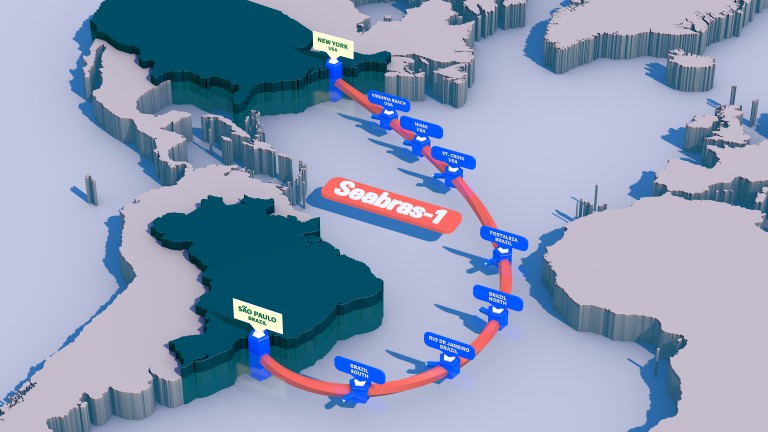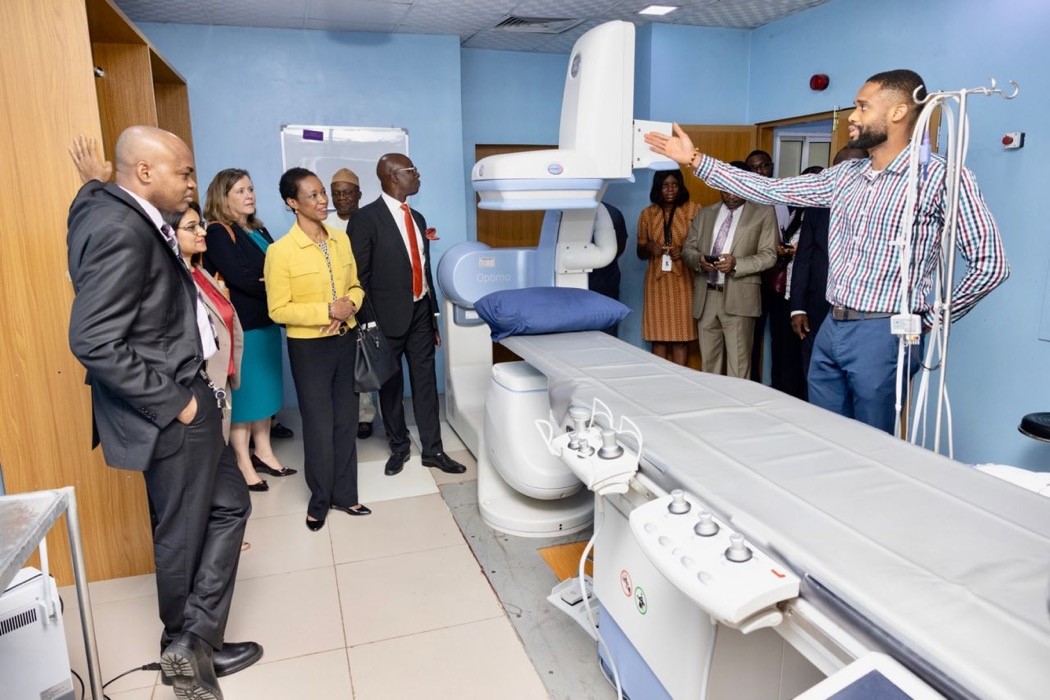In This Issue:
USTDA Bolsters Global Communications Through Subsea Cable Projects
Advancing Resilient Healthcare Infrastructure in Sub-Saharan Africa

Message from USTDA’s Director
Last June, President Biden and the G-7 leaders launched the Partnership for Global Infrastructure and Investment (PGII) to mobilize hundreds of billions of dollars and help close the infrastructure gap in emerging economies. The goals of this initiative align perfectly with USTDA’s mission, toolkit and experience. Now in our 30th year, the Agency’s brand of partnership-based project preparation assistance has never been more relevant to the infrastructure development needs of our overseas partners, U.S. commercial interests, and U.S. foreign policy priorities.
In this edition of TradePosts, we profile our unique role in a subsea fiber optic cable deal – one of PGII’s flagship projects – and our holistic approach toward healthcare infrastructure development in sub-Saharan Africa. These PGII-related activities reflect USTDA’s approach of supporting the development of infrastructure in ways that are mutually beneficial to the United States and our partners in emerging economies around the world.
Kind Regards,
Enoh T. Ebong
Director
USTDA Bolsters Global Communications Through Subsea Cable Projects Subsea fiber optic cables are an essential and highly sensitive component of the world’s telecommunications infrastructure. These cables are the backbone of the internet, carrying 99% of all international telecommunications traffic for personal, business, and government use. As existing transnational cables near capacity, emerging economies across the globe will require new cable systems to facilitate their communications traffic and continued economic growth. In recent years, USTDA has leveraged tools like the Agency’s training grants and reverse trade missions to help ensure these new cable systems are built with innovative American technology. One of the most recent projects – the Southeast Asia–Middle East–Western Europe 6 (SMW6) subsea fiber optic cable system – will link Singapore to France over a distance that exceeds 10,000 miles. When a U.S. company, SubCom, LLC, bid to build the project, its main competition was China’s HMN Technologies (formerly Huawei Marine Networks). USTDA offered training assistance to five countries involved in the selection process if they chose SubCom, helping the firm to win this major multinational contract. SubCom’s products will be made in America and provide high-speed connectivity on three continents. In the Western Hemisphere, a USTDA reverse trade mission supported Brazil’s transformative investment in the 6,500 mile-long Seabras-1 submarine cable – the only direct point-to-point system linking São Paulo to New York City. The system, launched in 2017 and operated by Boston-based small business Seaborn Networks, is optimized to process large volumes of data, offering speed, reliability, competitive costs and a critical route for global communications to and from South America. USTDA’s portfolio of subsea cable projects is growing. In West Africa, the Agency funded a study to develop the first subsea landing station in Nigeria’s Niger Delta region, at Bonny Island in Rivers State. This project will help alleviate internet traffic congestion and address growing demand for connectivity for millions of the region’s residents and corporate customers. As demand for data continues to grow, driven by mobile devices, cloud computing, and new wireless technologies like 5G, the need for modernized subsea cables is only increasing. USTDA’s innovative approach of bringing together U.S. companies and emerging economies will continue to provide the cutting-edge innovation that is changing the world every day. *Image courtesy of Seaborn Networks |
Advancing Resilient Healthcare Infrastructure in Sub-Saharan Africa The delivery of effective healthcare across sub-Saharan Africa requires resilient healthcare infrastructure with access to innovative medicines, technologies, and medical devices; a skilled workforce; and effective underlying regulations. Additionally, cross-cutting sectors such as electrification and connectivity are the foundation to building resilient healthcare infrastructure. USTDA’s holistic approach toward sub-Saharan Africa’s healthcare infrastructure development helps countries incorporate all of these considerations into their national strategies for strengthening healthcare delivery to their citizens. Access Project preparation underlies much of USTDA’s approach toward bolstering access to healthcare infrastructure. In Senegal, a USTDA study is advancing the development of several new public hospitals and mobile healthcare clinics that will expand and modernize the country’s healthcare system. In Nigeria, USTDA has approved assistance to refurbish and integrate existing healthcare facilities into a well-organized hospital network for Lily Hospitals Limited. USTDA is taking several novel approaches to revolutionize patient access. Recently approved projects include studies to advance Zipline Ghana’s efforts to expand healthcare services using unmanned aerial vehicles, as well as assist Mobihealthcare Limited, a woman-led Nigerian company, in extending its telehealth services in Cote d’Ivoire, Egypt, Ghana, and Kenya. Oncology Providing high-quality healthcare will require better diagnostic and treatment options for Africa’s citizens. Through targeted reverse trade missions to the United States and training grants, USTDA has supported investments by African healthcare institutions in innovative U.S. technologies that are delivering life-saving and effective cancer diagnostic and treatment solutions in Kenya, Nigeria, and Uganda. USTDA is also working with private sector partners such as Nigeria’s Cedarcrest Hospitals Limited to advance the development of a new comprehensive cancer treatment center in Abuja that will strengthen the country’s oncology infrastructure. Electrification and Connectivity USTDA is focused on delivering healthcare to underserved communities, which requires investing in critical underlying infrastructure. Leveraging USTDA’s expertise in the clean energy sector, USTDA is partnering with Nigeria’s EM-ONE Energy Solutions Limited for a feasibility study to bring clean energy solutions for up to 150 healthcare facilities through the deployment of solar mini-grid systems. This project will strengthen healthcare delivery in rural and underserved regions of Nigeria by ensuring that these facilities have a stable supply of electricity. Across the continent, USTDA is also working with its partners to strengthen internet connectivity in rural areas through its Access Africa initiative. This will, in turn, help connect rural health clinics to additional expertise as well as allow citizens to access medical information online and participate in telehealth visits. There is an interconnection between many of the sectors that USTDA prioritizes in sub-Saharan Africa, including clean energy, digital, and healthcare infrastructure. But what makes our program successful is our approach to partnerships. Through our recently launched Coalition for Healthcare Infrastructure in Africa, USTDA is working alongside U.S. industry and African stakeholders to address the priorities that Africa has established for itself, including healthcare accessibility for the underserved and a sector that is resilient in the face of the greatest public health challenges. When we match the interests of our private sector with the goals and objectives of our partners in Africa, we are able to develop sustainable healthcare infrastructure that can save and improve lives across the continent. |
View the original publication of this issue here.
